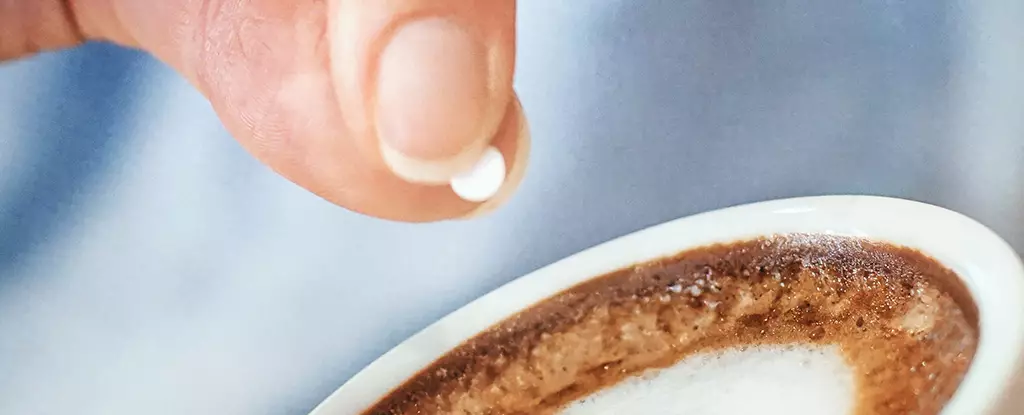In the realm of modern medicine, the quest to combat antibiotic resistance looms larger than ever. As we navigate through an alarming rise in drug-resistant bacteria, we are often left to ponder the efficacy of existing treatments. Interestingly, a recent study by a team from Brunel University in the UK has surfaced, shedding light on saccharin—an artificial sweetener long vilified for its dubious health effects. Instead of shunning this chemical, researchers are now exploring it as a potential game-changer in the ongoing war against superbugs.
Unveiling Saccharin’s Antimicrobial Potential
Ronan McCarthy, a microbiologist leading the charge at Brunel University, stated that saccharin exhibits impressive disruptive properties against various bacterial strains. The study’s findings reveal that saccharin isn’t just another ingredient to sweeten your drink; it has the ability to compromise bacterial cell structures, effectively rendering them more vulnerable to antibiotics. By causing physical distortions and ultimately rupturing the walls of pathogen cells, saccharin opens up the gates, allowing antibiotics to infiltrate and combat the bacteria more effectively.
This revelation is significant because it challenges our understanding of how we classify useful compounds in medicine. Historically, the pharmaceutical industry has invested billions into developing new antibiotics, a process fraught with delays and setbacks. However, saccharin is already present in everyday products, and its dual action as both an antimicrobial agent and an enhancer for antibiotic effectiveness presents an opportunity much fewer resources would require.
Testing the Waters with Drug-Resistant Bacteria
The research team didn’t just stop at controlled lab tests; they also pitted saccharin against notorious drug-resistant bacteria such as Staphylococcus aureus and Escherichia coli. While the effectiveness of saccharin varied, the fact that it managed to impact these resilient strains is a beacon of hope. In what has often been a losing battle against antibiotic resistance, discovering a common compound that holds promise against these formidable foes is cause for celebration.
McCarthy emphasizes the urgency of finding alternatives in the face of soaring antibiotic resistance statistics, which now account for millions of deaths worldwide each year. This issue isn’t simply academic; it has real-life implications for surgeries and procedures reliant on effective antibiotics to prevent infections. The potential application of saccharin points toward an innovative route that could bolster the arsenal against these pathogens.
Beyond Sweetening: New Applications in Medicine
Among the more intriguing outcomes of the study was the development of a surgical dressing infused with saccharin. When tested on pig skin, this dressing outperformed traditional materials like silver, showcasing a potential leap in medical application. Should these results translate effectively to human use, we could be looking at a revolutionary change in how we consider wound care procedures and infection control.
Such innovations could pave the way for exploiting saccharin not only as a sweetener but as a frontline defense in hospitals and clinics. The implications of creating cost-effective medical tools that minimize infection risk while also addressing antibiotic resistance should catch the attention of policymakers and healthcare leaders alike.
The Need for Caution and Further Exploration
Despite the excitement surrounding saccharin’s newfound capabilities, caution must prevail. As we embrace this compound in hopes of battling antibiotic resistance, it is vital to consider its broader effects on human health. The spectrum of artificial sweeteners and their diverse impacts on the gut microbiome call for thorough investigation before blanket recommendations can be made.
Mike McCarthy succinctly points out the duality of such novel antibiotics like saccharin—it holds incredible promise, but the potential for unexpected side effects looms large. For medical science, the stakes could not be higher; we are at a critical juncture where understanding the full range of impacts of compounds like saccharin should guide us in effectively harnessing its potential.
The backdrop of rising superbugs demands audacious solutions, and while saccharin may be a lesser-known contender, its role in our collective battle against antibiotic resistance is deserving of the spotlight. If we can successfully integrate saccharin into clinical applications while managing any risks, we might just turn the tide in a war that plagues modern medicine.

